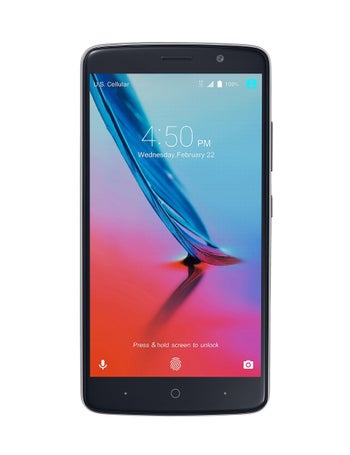ZTE Blade Max 3 vs Samsung Galaxy A20 Specs Comparison
Compare mobile phone specifications of up to three devices at once. Our specs comparison tool helps you find and compare the perfect phone for your needs.
|
|
|
| ZTE Blade Max 3 | Samsung Galaxy A20 |
|
Released
·
Apr 25, 2017
|
Released
·
Apr 10, 2019
|
|
6.0-inch · 1920x1080px
|
6.4-inch · 1560x720px
|
|
Dual camera
|
Dual camera
|
|
2GB · 16GB
|
3GB · 32GB
|
|
4000 mAh
|
4000 mAh
|
| Check prices |
Availability
| Officially announced | |
|---|---|
| Apr 25, 2017 | |
| Prices (MSRP) | |
| $250 | |
Design
| Dimensions | |
|---|---|
| 6.49 x 3.31 x 0.35 inches 164.8 x 84.1 x 8.9 mm |
6.24 x 2.94 x 0.31 inches 158.4 x 74.7 x 7.8 mm |
| Weight | |
| 6.34 oz / 180.0 g | 5.96 oz / 169.0 g |
| Materials | |
| Back: Plastic | |
| Biometrics | |
| Fingerprint (touch) | 2D Face unlock, Fingerprint (touch) |
| Keys | |
| Right: Volume control, Lock/Unlock key | Right: Volume control, Lock/Unlock key |
| Colors | |
| Blue | Black,Deep blue, Red |
Display
| Size | |
|---|---|
| 6.0-inch, 71.61% screen-to-body | 6.4-inch, 84.95% screen-to-body |
| Type | |
| IPS LCD | Super AMOLED, 60Hz |
| Resolution | |
| 1920x1080px, 367 PPI | 1560x720px, 19.5:9 ratio, 268 PPI |
| Protection | |
| Corning Gorilla Glass 3 | |
Hardware
| System chip | |
|---|---|
| Snapdragon 625 8953 (14 nm) | Samsung Exynos 7884 (14 nm) |
| Processor | |
| Octa-core 2000 MHz ARM Cortex-A53 |
Octa-core 1800 MHz ARM Cortex-A73 and ARM Cortex-A53 |
| GPU | |
| Adreno 506 | Mali-G71 MP2 |
| Memory | |
| 2GB (LPDDR3)/16GB | 3GB (LPDDR4)/32GB |
| Storage expansion | |
| microSDXC up to 128 GB | microSDXC up to 512 GB |
| OS | |
| Android (6.0 Marshmallow) | Android (11, 10, 9.0 Pie) |
Battery
| Type | |
|---|---|
| 4000 mAh, Li - Ion | 4000 mAh |
| Charging | |
| Samsung Adaptive Fast Charging | |
Camera
| Rear | |
|---|---|
| Dual camera | Dual camera |
| Main camera | |
| 13 MP (PDAF) | 13 MP (Autofocus) Aperture size: F1.9 Focal length: 27 mm Sensor size: 1/3.1" Pixel size: 1.12 μm |
| Second camera | |
| 13 MP | 5 MP (Ultra-wide) Aperture size: F2.2 Focal Length: 13 mm Sensor size: 1/5" Pixel size: 1.12 μm |
| Flash | |
| Dual LED | LED |
| Video recording | |
| 1080p (30 fps) Time-lapse video, Video calling, Video sharing |
1080p (30 fps) |
| Front | |
| 5 MP Video capture: 1080p |
8 MP |
Connectivity & Features
| Bluetooth | |
|---|---|
| 4.2 | 5.0 |
| WLAN | |
| b,g,n,ac,dual-band Wi-Fi Direct, Hotspot 802.11 b, g, n, ac | a,b,g,n,ac Wi-Fi Direct, Hotspot 802.11 a, b, g, n, ac |
| USB | |
| Type-C, USB 2.0 | Type-C, USB 2.0 |
| Sensors | |
| Accelerometer, Gyroscope, Compass, Hall (for flip covers), Ambient light sensor, Proximity sensor | Accelerometer, Gyroscope, Compass, Hall (for flip covers), Ambient light sensor, Proximity sensor |
| Hearing aid compatible | |
| M4/T3 | |
| Location | |
| GPS, A-GPS | GPS, A-GPS, Glonass, Galileo, Cell ID, Wi-Fi positioning |
| Other | |
| Tethering, Computer sync, OTA sync | |
Multimedia
| Headphones | |
|---|---|
| 3.5mm jack | 3.5mm jack |
| Speakers | |
| Earpiece, Loudspeaker | Earpiece, Loudspeaker |
| Features | |
| Album art cover, Background playback | Dolby Atmos |
| Screen mirroring | |
| Wireless screen share | Wireless screen share |
| Additional microphone(s) | |
| Noise cancellation | Noise cancellation |
Cellular
| 4G (FDD) Bands | |
|---|---|
| 2, 4, 5, 12, 13, 25 | 2, 3, 4, 5, 7, 13, 20, 28, 66 |
| 3G Bands | |
| 5, 4, 2 | 1, 2, 5, 8 |
| Data Speed | |
| LTE Cat 4 (150/50 Mbit/s), HSPA | LTE-A Cat 6 (300/50 Mbit/s), HSDPA+ (4G) 42.2 Mbit/s, HSUPA 5.76 Mbit/s |
| SIM type | |
| Nano SIM | Nano SIM |
Regulatory Approval
| FCC approval | |
|---|---|
| Date approved: Feb 16, 2017 FCC ID value: SRQ-Z986DL | Date approved: Jun 19, 2019 FCC ID value: A3LSMA205U |
| Measured SAR | |
| Head: 0.36 W/kg Body: 0.14 W/kg Simultaneous Transmission: 1.34 W/kg Wireless Router: 0.14 W/kg |
Head: 1.09 W/kg Body: 0.60 W/kg Simultaneous Transmission: 1.37 W/kg Wireless Router: 1.00 W/kg Phablet: 3.94 W/kg |
Alternative variants
for T-Mobile and Metro
| 4G (FDD) Bands | 1, 2, 3, 4, 5, 7, 8, 12, 13, 20, 25, 26, 28, 66, 71 |
|---|---|
| 4G (TDD) Bands | 38, 39, 40, 41 |
| 3G Bands | 5, 8, 4, 2, 1 |
for Verizon, Sprint, Virgin Mobile and Boost Mobile
| 4G (FDD) Bands | 2, 4, 5, 12, 13, 25, 26, 71 |
|---|---|
| 4G (TDD) Bands | 41 |
| 3G Bands | 5, 8, 4, 2, 1 |
for US Cellular
| 4G (FDD) Bands | 2, 4, 5, 12, 13, 25, 66, 71 |
|---|---|
| 3G Bands | 5, 8, 4, 2, 1 |
Discover more
|
|

